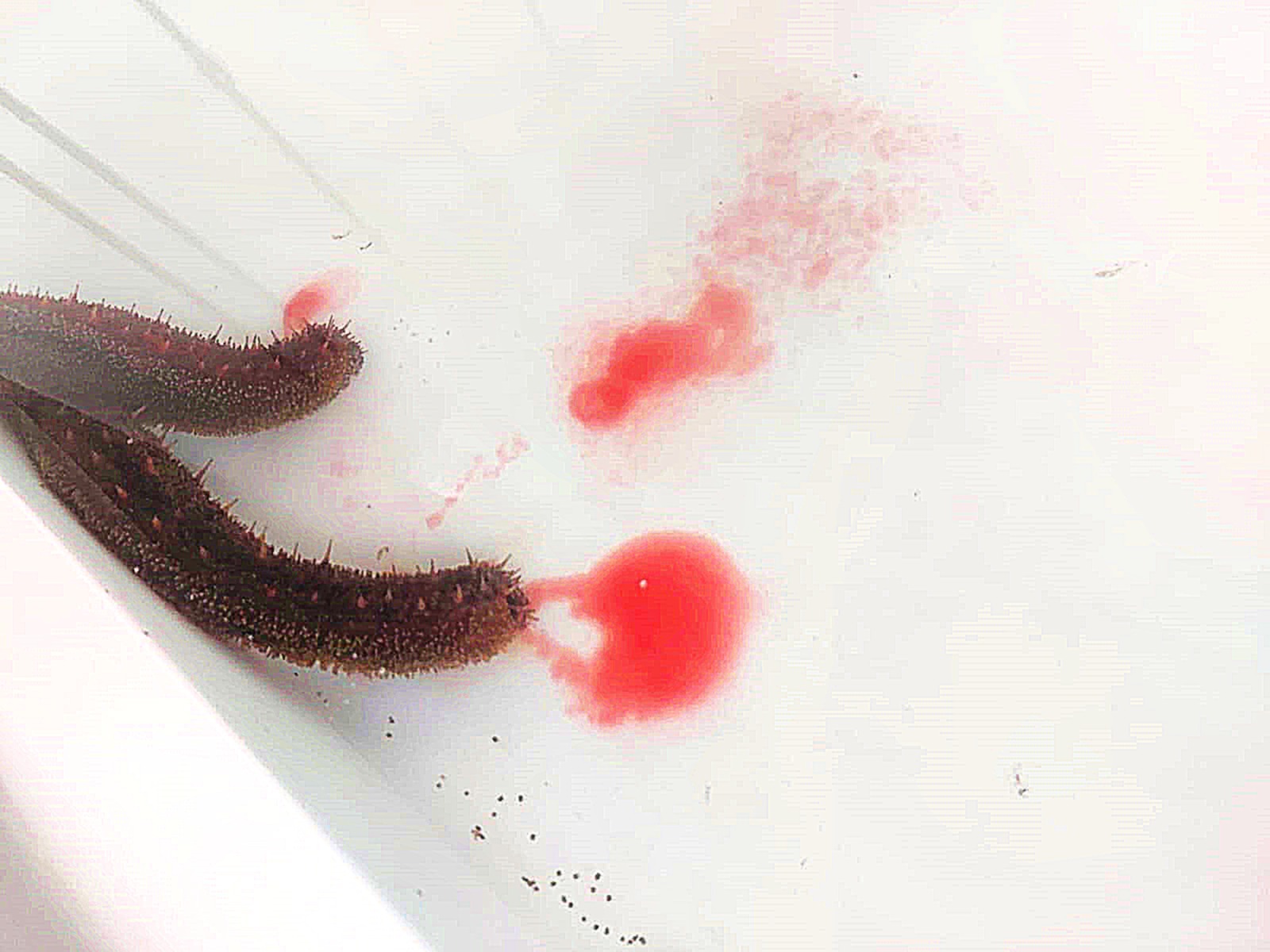Viability of induced spawning of Holothuria (Halodeima) grisea
advances toward sustainable mariculture in Santa Catarina
Keywords:
Induction to spawning, sea cucumbers, aquaculture, gamete releaseAbstract
Sea cucumbers play fundamental ecological roles in marine ecosystems, but due to their high commercial value, several species have been subject to intense fishing exploitation. The development of technologies for cultivating sea cucumbers emerges as a sustainable alternative, with the induction of spawning being an essential step for larviculture and juvenile production. This study presents the results of spawning inductions for Holothuria (Halodeima) grisea, a species of commercial interest and the target of indiscriminate fishing in Brazil. Between 2021 and 2025, 45 inductions were performed, testing combinations of physical, mechanical, and biological stimuli. In experiments conducted until 2023, the applied methods, which are effective for other species, showed low efficiency for H. grisea. Experiments carried out after 2024, including maintenance in a recirculating system for 5 to 7 weeks, combined with greater temperature variations, resulted in a significant increase in gamete release, enabling fertilization. These results indicate that prolonged laboratory conditioning favors gonadal maturation and increases spawning success. The results, combined with the feasibility of larval culture and the recent production of juveniles, open new perspectives for the cultivation of sea cucumbers in Brazil.
Metrics
Publication Facts
Reviewer profiles N/A
Author statements
- Academic society
- Epagri - Revista Agropecuária Catarinense
- Publisher
- Empresa de Pesquisa Agropecuária e Extensão Rural de Santa Catarina - Epagri
References
AGUDO N. Sandfish hatchery techniques. Australian Centre for International Agricultural Research (ACIAR), Secretariat of the Pacific Community (SPC) & WorldFish Center, Noumea. 2006. 43pp.
ALTAMIRANO, J. P., RODRIGUEZ, C. Hatchery production of sea cucumbers (sandfish Holothuria scabra). Southeast Asian Fisheries Development Center; Australian Centre for International Agricultural Research, Philippines. 2022. 54p. (Aquaculture Extension Manual No. 69)
MERCIER, A.; PURCELL, S. W.; MONTGOMERY, E. M.; KINCH, J.; BYRNE, M.; HAMEL, J.F. Revered and reviled: the plight of the vanishing sea cucumbers. Annual Review of Marine Science, v. 17, p. 115–142, 2025. https://doi.org/10.1146/annurev-marine-032123-025441
NOCILLADO, J.; DUY, N.D.Q.; CHIEU, H.D.; TURNER, L.; BATHGATE, R.A.D.; WANG, T.; HOSSAIN, M.A.; HUNG, N.V.; NINH, N.H.; CUMMINS, S.F.; ELIZUR, A. Spawning induction of the high-value white teatfish sea cucumber, Holothuria fuscogilva, using recombinant relaxin-like gonad stimulating peptide (RGP). Aquaculture, v.547, 737422, 2022. https://doi.org/10.1016/j.aquaculture.2021.737422
PURCELL, S. W.; CONAND, C.; UTHICKE S.; BYRNE. M. Ecological roles of exploited sea cucumbers. In: HUGHES, R. N. et al., (ed.). Oceanography and Marine Biology: An Annual Review. v. 54. Boca Raton: CRC Press, 2016. p. 367–386
RUPP, G. S., MARENZI, A. C.; De SOUZA, R. V.; MARTINS, L. Sea cucumbers (Echinodermata: Holothuroidea) from Santa Catarina coast, Southern Brazil, with notes on their abundance and spatial distribution. Journal of Shellfish Research, v. 42, n. 1, p. 143-153, 2023. doi: 10.2983/035.042.0115.
RUPP, G. S.; DA COSTA, R. C.; MARENZI, A. C.; MANZONI, G. C.; DA SILVA, I. S. Reprodução e larvicultura de Holothuria (H.) grisea Selenka, 1867 (Holothuroidea: Aspidochirotida) em laboratório: resultados iniciais no sul do Brasil. AquaTechnica, v. 3, n. 3, p. 133–143, 2021. https://doi.org/10.33936/at.v3i3.4147
RUPP, G. S.; DA COSTA, R. C.; SCHROEDER, R. Population survey of Holothuria (Halodeima) grisea (Aspidochirotida: Holothuriidae) at its limit of geographic distribution in the Western South Atlantic. Revista de Biología Tropical, v. 72, supl. 1, e58623, 2024.
RUPP, G. S.; COSTA, R.; MARENZI, A.; MANZONI, G. Advances in sea cucumber juvenile culture in Brazil. In: CONGRESO LATINOAMERICANO DE EQUINODERMOS. Libro de Resumenes[…]. Santa Marta, Colombia. 2025. p.18

Downloads
Published
How to Cite
Issue
Section
License
Copyright (c) 2025 Guilherme Sabino Rupp, Robson Cardoso da Costa, Gilberto Caetano Manzoni, Adriano W. C. Marenzi Marenzi

This work is licensed under a Creative Commons Attribution 4.0 International License.
Funding data
-
Fundação de Amparo à Pesquisa e Inovação do Estado de Santa Catarina
Grant numbers Projeto 2021TR000658




